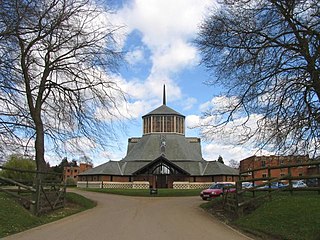Related Research Articles

The Benedictines, officially the Order of Saint Benedict, are a mainly contemplative monastic order of the Catholic Church for men and for women who follow the Rule of Saint Benedict. Initiated in 529 they are the oldest of all the religious orders in the Latin Church. The male religious are also sometimes called the Black Monks, especially in English speaking countries, after the colour of their habits. Not all Benedictines wear black, however, with some like the Olivetans wearing white. They were founded by Benedict of Nursia, a 6th-century Italian monk who laid the foundations of Benedictine monasticism through the formulation of his Rule. Benedict's sister, Scholastica, possibly his twin, also became a religious from an early age, but chose to live as a hermit. They retained a close relationship until her death.

Year 1165 (MCLXV) was a common year starting on Friday of the Julian calendar.
François de Bar was a French Benedictine monk and scholar.
Odo of Tournai, also known as Odoardus or Odo of Orléans (1060–1113), was a Benedictine monk, scholar and bishop of Cambrai.
Saint Amatus, also called St. Aimé or Aimé of Sion, was a Benedictine monk, who was chosen bishop of Sion, in the Valais. He was subsequently banished by Theuderic III, King of the Franks.

The English Benedictine Congregation (EBC) is a congregation of autonomous abbatial and prioral monastic communities of Catholic Benedictine monks, nuns, and lay oblates. It is technically the oldest of the nineteen congregations affiliated to the Benedictine Confederation.

The University of Douai was a former university in Douai, France. With a medieval heritage of scholarly activities in Douai, the university was established in 1559 and lectures started in 1562. It closed from 1795 to 1808. In 1887, it was transferred as University of Lille 27 km away from Douai.

Marienberg Abbey is a Benedictine abbey in Mals, Vinschgau in South Tyrol, northern Italy. It was founded in 1149 or 1150 by Ulrich von Tarasp and other nobles.

Douai Abbey is a Benedictine Abbey at Upper Woolhampton, near Thatcham, in the English county of Berkshire, situated within the Roman Catholic Diocese of Portsmouth. Monks from the monastery of St. Edmund's, in Douai, France, came to Woolhampton in 1903 when the community left France as a result of anti-clerical legislation. The abbey church is listed Grade II* on the National Heritage List for England.
Rudesind Barlow (1585–1656) was an English Benedictine monk, a recusant academic, and Rector of the English College in Douai.

Lamspringe Abbey is a former religious house of the English Benedictines in exile, at Lamspringe near Hildesheim in Germany.

Douai School was a public school run by the Douai Abbey Benedictine community at Woolhampton, England, until it closed in 1999.

Maurontius of Douai was a nobleman and Benedictine abbot. His parents were Rictrude and Adalbard. He is a Catholic saint, with a feast day on May 5, especially venerated in Douai, France. His sisters Clotsinda, Adalsinda and Eusebia of Douai are also saints.

Anchin Abbey was a Benedictine monastery founded in 1079 in the commune of Pecquencourt in what is now the Nord department of France.
The sexual abuse scandal in the English Benedictine Congregation was a significant episode in the series of Catholic sex abuse cases in the United Kingdom. The dates of the events covered here range from the 1960s to the 2010s.

Aaigem is a village belonging to the municipality of Erpe-Mere. It is located in the province of East Flanders, Belgium. The village has some 2000 inhabitants. Aaigem was an independent municipality with an area of 7.32 square kilometers till 1976.
Bishop Alvise was a Bishop of Arras in the 12th century.
Nicolas Mainfroy (c.1570–1611) was the 71st abbot of the Benedictine Abbey of Saint Bertin in Saint-Omer from 1604 until his death, and represented the First Estate in the States of the County of Artois, which is now in France but was then part of the Spanish Netherlands.
Goswin is a Germanic male given name originally meaning "friend (win) of the Goths (gos)" As Gosewijn, Goswijn or Gozewijn it was quite common in the Middle Ages in the Low Countries. Latinized versions include Gos(s)uinus, Gosvinus, and Goswinus, while in French the name has been rendered Gosvin and Gossuin.
Gelduin was a Benedictine monk who served as the third abbot of Anchin from 1102 to 1109.
References
- ↑ "Saint Goswin". 10 October 2008.
- ↑ "St. Goswin - Saints & Angels".